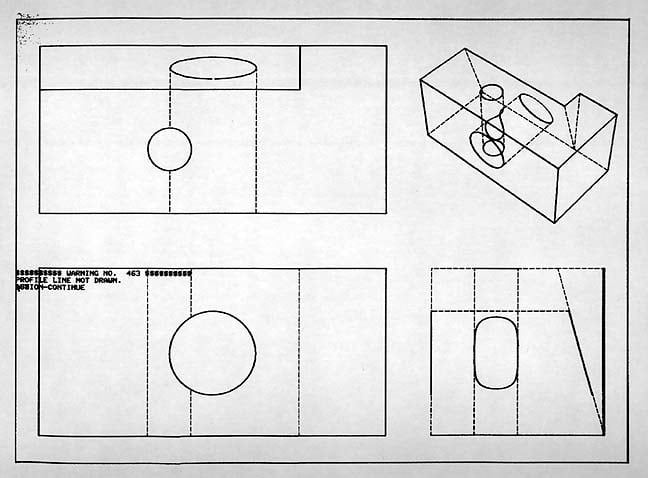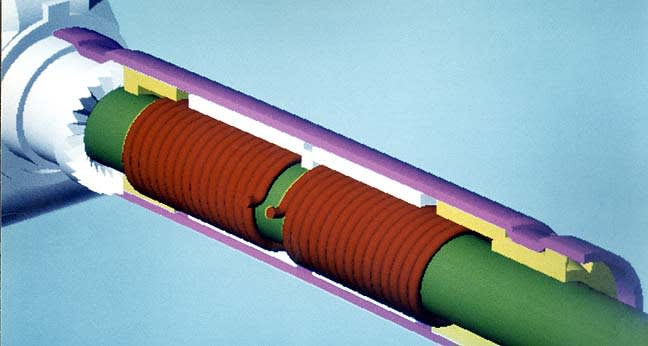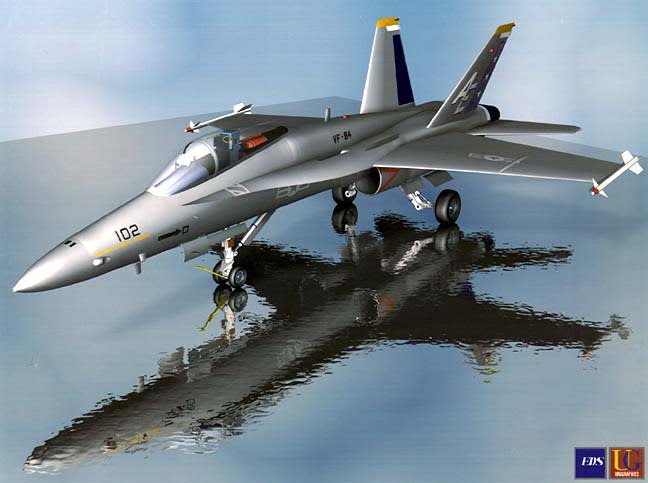We are looking to take on an Aerospace Mechanical Engineering apprentice and I would like to give the candidates a problem to solve during the interview. I dont want anything too technical, just something that will give us an insight into how they approach problem solving, we are looking for someone who thinks logically but also thinks outside the box. Does anyone have anything I can use, or does anyone have any ideas please? Many thanks 
Navigation
Install the app
How to install the app on iOS
Follow along with the video below to see how to install our site as a web app on your home screen.
Note: This feature may not be available in some browsers.
More options
Style variation
-
Congratulations cowski on being selected by the Eng-Tips community for having the most helpful posts in the forums last week. Way to Go!
You are using an out of date browser. It may not display this or other websites correctly.
You should upgrade or use an alternative browser.
You should upgrade or use an alternative browser.
Looking for ideas for a Mechanical Engineering problem 21
- Thread starter Lisa_247
- Start date
- Status
- Not open for further replies.
electricpete
Electrical
Isn't the ability to visualize from 2-D drawings like that something that grows with practice?
(I hope so, because I didn't get close on either of those top-view/side-view quizzes and I'm looking for an excuse)
=====================================
(2B)+(2B)' ?
(I hope so, because I didn't get close on either of those top-view/side-view quizzes and I'm looking for an excuse)
=====================================
(2B)+(2B)' ?
-
1
- #82
JohnRBaker
Mechanical
It's actually the other way round. From birth, everything that an individual interacts with are ALL 3-D, be definition, and until the advent of solid modeling and 3-D graphical displays, anyone wishing to be an engineer had to learn to both visualize and decipher the world around them in terms of 2-D drawings and orthogonal projections. Due to my introduction to CAD/CAM in 1977, and subsequently working in that industry until I retired four years ago, I was truly one of the pioneers when engineering moved first from 2-D paper drawings to 2-D electronic data to full 3-D solid modeling. During the early days of solid modeling I was one of the people who tested and demonstrated the current state of the art. For example, the image below shows one of the first solid models that I ever created. Note that this was in 1982 and the software, PADL-1, was a language-based product where you had to write lines of code describing each shape that made-up your model (we only had two 'primitive' shapes to work with, a Cylinder and a Block), their size and location, and how they interacted with one another (which items were removed from another, thus forming a void). The picture below is what the result looked like. BTW, after describing the shapes, the three orthogonal and one isometric views were created with a single command, which included the automatic placement of the views and the rendering of the hidden-lines (there was even an option to display dimensions, but it was mostly for hype, and besides, this software was only intended to dangle the bait until we could get enough interest to invest in an actual usable product):

A couple of years later, we were able to model fairly complex assemblies as full solid models and render them as shaded images. The image below was a model that I create which eventually found it's way onto the cover of one of the engineering magazines of the era. This was in 1984, and it was modeled using a software product called UniSolids, for which I was the unofficial Product Manager (there was no official product manager and while I worked in Sales Support, since I was the person who had worked with the software developers to help test the software and perform the first demo's and eventually actual benchmarks, I was the guy shaping the future direction that it was going):

Within 10 years, we were able to produce much more realistic models, such as this one from 1994:

Anyway, back to the point I've been trying to make, and that is that until engineers had access to these 3-D tools, most of them were living in a 2-D environment when it came to how they were communicating with most of the rest of the world. In fact, during an engineering conference I once made this observation: Before the advent of 3-D CAD, if you had asked an engineer to describe, in whatever way that they were most comfortable with, something as simple as a 'brick', the first thing they would do would be to grab a piece of paper and start drawing 2-D orthogonal views AND perhaps a rough 3-D sketch up in the corner. However, if I had given this same task to a non-engineer, it's likely that that person would have simply used their hands to sort of give the impression of the size and shape of the 'brick'. The point I was trying to make in my presentation was that from childhood, people already understanding how the 3-D world worked but engineers had to be trained to view the world in 2-D and to communicate using tools confined to producing 2-D representations of that world and the things in it. I was selling the audience on the idea that 3-D CAD was the 'natural' way to work, leveraging our lifetime experience of interacting with a 3-D world full of solid objects.
So yea, those 'drawing' examples are a bit arcane now, but if nothing else, they could help to 'break ties' as it were.
John R. Baker, P.E. (ret)
EX-Product 'Evangelist'
Irvine, CA
Siemens PLM:
UG/NX Museum:
The secret of life is not finding someone to live with
It's finding someone you can't live without

A couple of years later, we were able to model fairly complex assemblies as full solid models and render them as shaded images. The image below was a model that I create which eventually found it's way onto the cover of one of the engineering magazines of the era. This was in 1984, and it was modeled using a software product called UniSolids, for which I was the unofficial Product Manager (there was no official product manager and while I worked in Sales Support, since I was the person who had worked with the software developers to help test the software and perform the first demo's and eventually actual benchmarks, I was the guy shaping the future direction that it was going):

Within 10 years, we were able to produce much more realistic models, such as this one from 1994:

Anyway, back to the point I've been trying to make, and that is that until engineers had access to these 3-D tools, most of them were living in a 2-D environment when it came to how they were communicating with most of the rest of the world. In fact, during an engineering conference I once made this observation: Before the advent of 3-D CAD, if you had asked an engineer to describe, in whatever way that they were most comfortable with, something as simple as a 'brick', the first thing they would do would be to grab a piece of paper and start drawing 2-D orthogonal views AND perhaps a rough 3-D sketch up in the corner. However, if I had given this same task to a non-engineer, it's likely that that person would have simply used their hands to sort of give the impression of the size and shape of the 'brick'. The point I was trying to make in my presentation was that from childhood, people already understanding how the 3-D world worked but engineers had to be trained to view the world in 2-D and to communicate using tools confined to producing 2-D representations of that world and the things in it. I was selling the audience on the idea that 3-D CAD was the 'natural' way to work, leveraging our lifetime experience of interacting with a 3-D world full of solid objects.
So yea, those 'drawing' examples are a bit arcane now, but if nothing else, they could help to 'break ties' as it were.
John R. Baker, P.E. (ret)
EX-Product 'Evangelist'
Irvine, CA
Siemens PLM:
UG/NX Museum:
The secret of life is not finding someone to live with
It's finding someone you can't live without
I have found that some mechanical engineers have a deficit in being able to mentally visualize rotations of the mechanical elements they are working with. That 2-D to 3-D business is a side effect of that ability. I have seen this as they demand increasingly complex visualization tools and complain bitterly about things like "too many hidden lines" and wanting the software to somehow automatically hide those items they think is an obstacle to their understanding, usually claiming the mind-reading task is "simple."
This also shows up in poor ability to understand other time-dependent conditions, such as thermal transients, movement in mechanisms, variation stack-ups, strains on microscopic scales, and so on.
It would be a decent research project to determine just how much correlation there is between these to see if a simple test could predict a wide span of ability.
This also shows up in poor ability to understand other time-dependent conditions, such as thermal transients, movement in mechanisms, variation stack-ups, strains on microscopic scales, and so on.
It would be a decent research project to determine just how much correlation there is between these to see if a simple test could predict a wide span of ability.
-
1
- #84
3DDave said:It would be a decent research project to determine just how much correlation there is between these to see if a simple test could predict a wide span of ability.
I'm sure nobody here has unbiased data on this, because we hired the only people we did.
We have a senior engineer at my work who thought it was his privilege to quiz engineering candidates on random items from his college engineering textbooks. He has a healthy dose of intellectual snobbery in him. For the short time he was allowed to be part of interviews, I'm sure we managed to only hire engineers with a high tolerance for jerks.
David
Compositepro
Chemical
"we managed to only hire engineers with a high tolerance for jerks."
That is a very valuable attribute in most work environments.
That is a very valuable attribute in most work environments.
Yeah, I was going to say; that sounds good to me. Do we really want to hire so many snowflakes?
Do we really want to hire so many snowflakes?
There's a big difference between not hiring a candidate and having them walk away, usually the later involves negative feelings which may come back to bite you. Folks tend to have entire careers within a single industry, and even large industries are surprisingly small. Being a jerk to the wrong candidate could result in anything from your employer developing a bad reputation to ending up on a major blacklist when that person works elsewhere. Reputation is often everything when it comes to sales, and interviews not only give companies a look at individuals but also give individuals a look at companies.
CWB1 said:There's a big difference between not hiring a candidate and having them walk away, usually the later involves negative feelings which may come back to bite you.
You are so right.
At an interview, a guy tells me he had to leave in 15-minutes. The HR rep was there as well. He threw a print at me and asked "How would you clamp that down to machine it?"
He's leaving in 15-minutes. I know nothing about the part, what features were being machined, what machine it would be done on. I would have to go to the shop floor and discuss it with the machinist and get some real input. I told him I wouldn't know that-in the amount of time he had left. Then he read in my resume that I worked for a foundry at one time. So he asked me a metallurgical question that I actually used to know. It's been 15-years since I worked in the foundry, I don't remember that stuff. He abruptly left.
I wasn't happy and the HR rep knew it. I never heard from them after that because they knew I would never work with that jerk. I'll never do business with the company either.
- Status
- Not open for further replies.
Similar threads
- Question
- Replies
- 5
- Views
- 3K
- Locked
- Question
- Replies
- 13
- Views
- 914
- Question
- Replies
- 4
- Views
- 8K
- Locked
- Question
- Replies
- 4
- Views
- 3K
- Locked
- Question
- Replies
- 10
- Views
- 684
